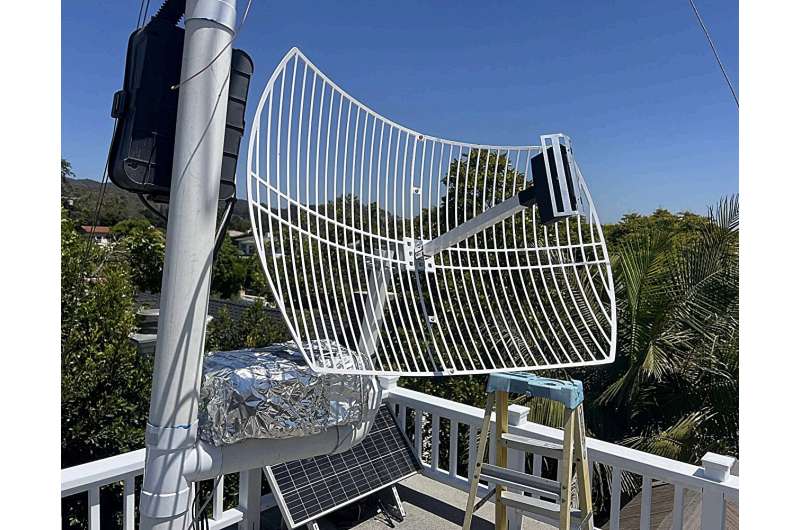
If I ask you to picture a radio telescope, you probably imagine a large dish pointing to the sky, or even an array of dish antennas such as the Very Large Array. What you likely don’t imagine is something that resembles a TV dish in your neighbor’s backyard. With modern electronics, it is relatively easy to build your own radio telescope. To understand how it can be done, check out a recent paper by Jack Phelps posted to the arXiv preprint server.
He outlines in detail how you can construct a small radio telescope with a 1-meter satellite dish, a Raspberry Pi, and some other basic electronics such as analog-to-digital converters. It’s a fascinating read, and one of the most interesting features is that his design is tuned to a frequency of 1420.405 MHz. This is the frequency emitted by neutral hydrogen.
Since it has a wavelength of about 21 centimeters, the hydrogen emission line is sometimes called the 21-cm line. Neutral hydrogen comprises the bulk of matter in the universe. The 21-cm emission isn’t particularly bright, but because there is so much hydrogen out there, the signal is easy to detect. And wherever there is matter, so too is the hydrogen line.
The emission is caused by a spin flip of the hydrogen’s electron. It’s a hyperfine emission, which means the line is very sharp. If you see the line shifted a bit, you know that’s because of relative motion. Astronomers have used the line to map the distribution of matter in the Milky Way, and have even used it to measure our galaxy’s rotation. Early observations of the line pointed to the existence of dark matter in our galaxy. And now you can do it at home.
There are other radio objects you can observe in the sky. The sun is a popular target given its strong radio signal. Jupiter is another somewhat bright source. It’s a cool hobby. Even if you don’t intend to build a radio telescope of your own, it’s worth checking out the paper just to see how accessible radio astronomy has become.
More information:
Jack Phelps, Galactic Neutral Hydrogen Structures Spectroscopy and Kinematics: Designing a Home Radio Telescope for 21 cm Emission, arXiv (2024). DOI: 10.48550/arxiv.2411.00057
Journal information:
arXiv
Provided by
Universe Today
How to build a home radio telescope to detect clouds of hydrogen in the Milky Way (2024, November 8)
retrieved 8 November 2024
from https://phys.org/news/2024-11-home-radio-telescope-clouds-hydrogen.html
part may be reproduced without the written permission. The content is provided for information purposes only.